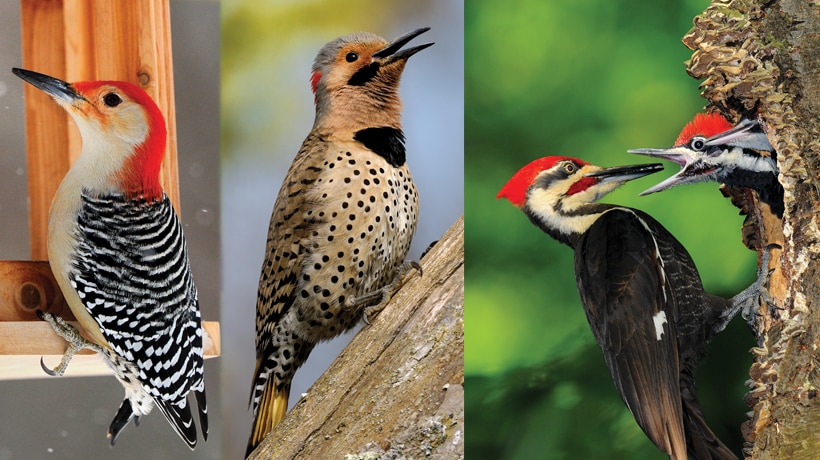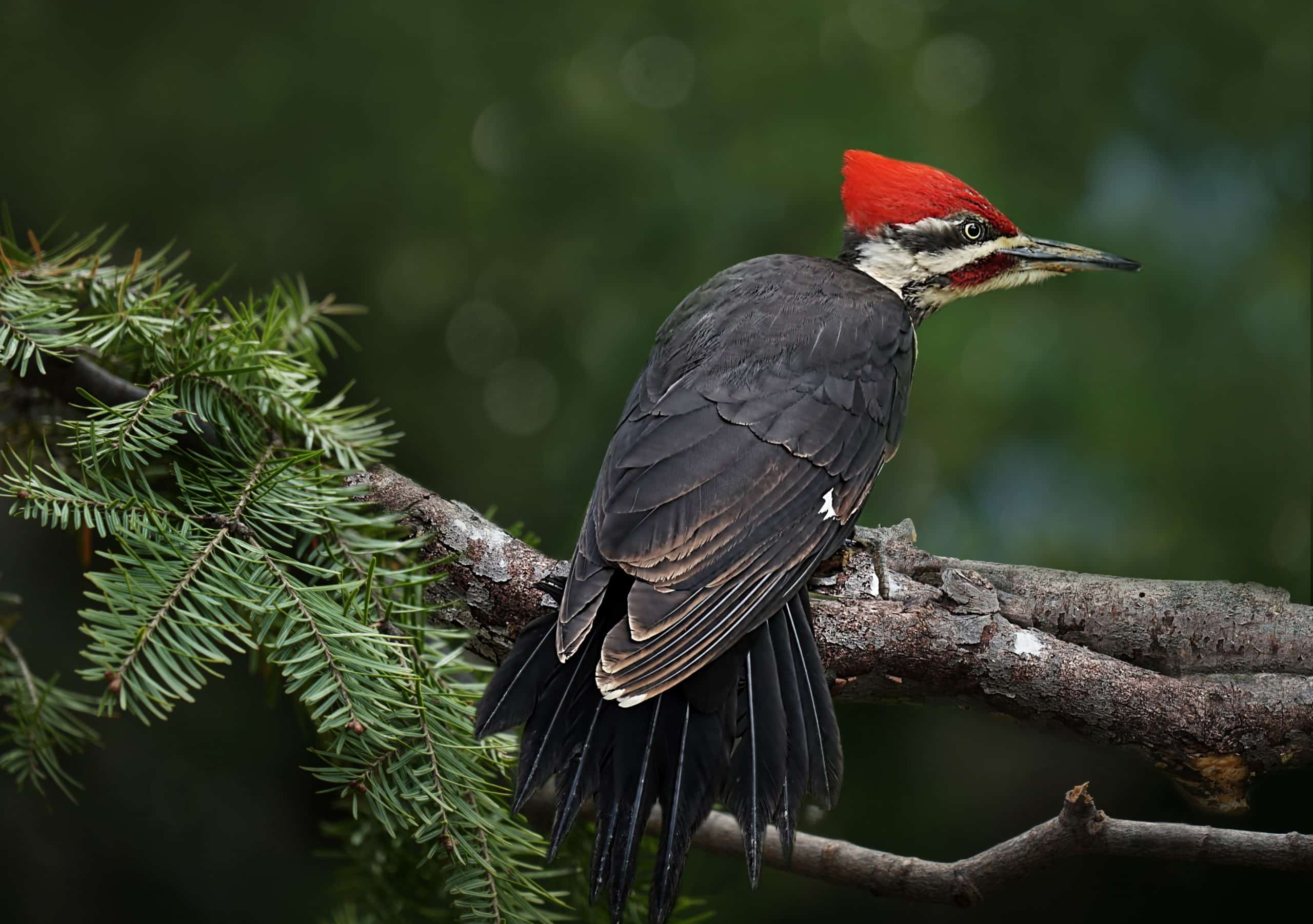Comprehending Woodpeckers in Florida: Actions, Species, and Habitats
Comprehending Woodpeckers in Florida: Actions, Species, and Habitats
Blog Article
Woodpeckers: A Comprehensive Guide to Recognizing These One-of-a-kind Birds
Woodpeckers, with their distinctive actions and physical features, have actually long mesmerized the curiosity of ornithologists and nature enthusiasts alike. From their rhythmic drumming resembling with the woods to their remarkable adjustments for scaling tree trunks easily, these birds provide an interesting study in avian biology. What really establishes woodpeckers apart is not just their striking appearance yet likewise their important role in preserving the delicate equilibrium of ecosystems. As we check out the elaborate composition, diverse varieties, and ecological significance of woodpeckers, a much deeper gratitude for these one-of-a-kind birds and the secrets they hold unravels.

Woodpeckers' Drumming Actions
Woodpeckers exhibit a balanced and specific drumming actions that offers different necessary functions in their lives. This habits is mainly associated with communication, area defense, and foraging. The distinctive drumming audio is developed by the fast pecking of their beaks against hard surface areas such as tree trunks, branches, or perhaps metal items.
Communication is an important aspect of woodpecker behavior, and drumming plays a substantial function in this process. Woodpeckers make use of drumming to develop their existence, attract mates, and keep contact with their partners and spawn. The frequency, intensity, and period of drumming sequences share particular messages to various other woodpeckers in the area.
In addition to interaction, woodpeckers use drumming behavior for region defense. Woodpeckers in Florida. The loud and repetitive drumming acts as an advising to potential intruders, signifying that the area is currently asserted. By establishing their territory via drumming, woodpeckers reduce the possibility of problems over valuable resources such as food and nesting sites
Furthermore, woodpeckers additionally use drumming as a foraging strategy. The balanced pecking helps them situate bugs hiding under the bark of trees by developing vibrations that disrupt the target's cover-up. This behavior showcases the adaptability and resourcefulness of woodpeckers in using their drumming abilities for multiple essential functions.
One-of-a-kind Adaptations for Tree Climbing
Having actually mastered the art of drumming to interact, protect region, and forage, woodpeckers have advanced distinct adaptations that promote their amazing climbing up abilities in their arboreal habitats. One key adjustment is their customized feet. Woodpeckers have zygodactyl feet, with two toes directing ahead and 2 toes aiming backward. This plan supplies a strong hold on the upright surface areas of trees, allowing them to cling easily while foraging for bugs or drumming. Furthermore, woodpeckers have tight tail plumes that work as a prop to sustain their bodies as they climb. These tail feathers offer stability and balance, allowing woodpeckers to steer up tree trunks with accuracy and dexterity.
Moreover, woodpeckers have effective neck muscle mass and a special skull structure that help in their climbing up capacities. Their strong neck muscle mass allow them to rapidly eat tree bark without experiencing whiplash, while their thick head and little brain work as shock absorbers, protecting them from the influence of duplicated drumming. These adaptations collectively make it possible for woodpeckers to browse the vertical world of trees with efficiency and poise.

Duty of Woodpeckers in Communities
Playing a pivotal role in woodland ecological communities, woodpeckers contribute substantially to the equilibrium and health of their habitats with their one-of-a-kind behaviors and interactions with other varieties. Among the key ecological functions of woodpeckers is their duty in controlling insect populations. By foraging for bugs under the bark of trees, woodpeckers assist manage parasite populations, avoiding break outs that might hurt the total health of the forest. Furthermore, woodpeckers produce tooth cavities in trees that offer as critical nesting websites for a selection of various other bird species, advertising biodiversity within the environment.
In addition, the drumming and vocalizations of woodpeckers play a vital role in interaction and region facility. These sounds not only offer to bring in companions but likewise assist define borders in between different woodpecker territories, lowering problems and promoting a see post harmonious conjunction within the woodland community. Overall, the presence of woodpeckers in woodland ecological communities highlights their relevance as keystone types, influencing the dynamics and operating of these environments in multifaceted means.
Makeup: Specialized Beaks and Feet
In the elaborate internet of forest ecological communities, the specialized beaks and feet of woodpeckers are vital adjustments that enable them to accomplish their essential eco-friendly duties. Woodpeckers have distinct physiological functions that are especially made to assist them in their foraging and nesting actions.
The most distinguishing characteristic of woodpeckers is their solid, chisel-shaped beaks. These beaks are flawlessly adjusted for boring right into wood to discover bugs, larvae, and sap surprise under the bark of trees. The strong muscle mass helpful site and strong framework of their beaks permit woodpeckers to eat a price of as much as 20 times per second without creating damages to their skulls.
Furthermore, woodpeckers have specialized feet that aid in their acrobatic climbing capacities. Their feet have 2 toes pointing forward and two toes directing backwards, giving a solid grip on vertical surfaces (Woodpeckers in Florida). This one-of-a-kind foot arrangement, along with rigid tail feathers that function as an encouraging prop, permits woodpeckers to hold on to tree trunks and branches effortlessly while they look for food or excavate nesting cavities
Woodpecker Variety Variety
What variables add to the amazing diversity of woodpecker types throughout different habitats and areas? Woodpeckers are a diverse team of birds discovered across numerous ecological communities worldwide, with over 200 recognized types exhibiting adaptations to different settings. One essential factor driving this diversity is the schedule of ideal environments. Woodpeckers have actually advanced to live in a series of atmospheres, from forests and woodlands to grasslands and deserts, each offering special difficulties that have affected the advancement of unique woodpecker types.
Another adding element to woodpecker varieties Full Article variety is their specialized feeding habits. Different types have progressed to exploit numerous food sources, such as pests, tree sap, fruits, and nuts, causing the development of certain adaptations in beak form, size, and stamina. These adaptations make it possible for woodpeckers to forage effectively in their corresponding habitats, decreasing competitors among varieties and promoting particular niche distinction. Additionally, geographical seclusion and historical variables have played a function in shaping the distribution and variety of woodpecker species, causing the vast array of specialized adjustments seen in these interesting birds.

Verdict
In final thought, woodpeckers are remarkable birds that display one-of-a-kind drumming habits, specialized adjustments for tree climbing, and play important functions in ecosystems. With a diverse array of woodpecker species discovered worldwide, these birds are essential for keeping the health and balance of woodlands and woodlands.
Report this page